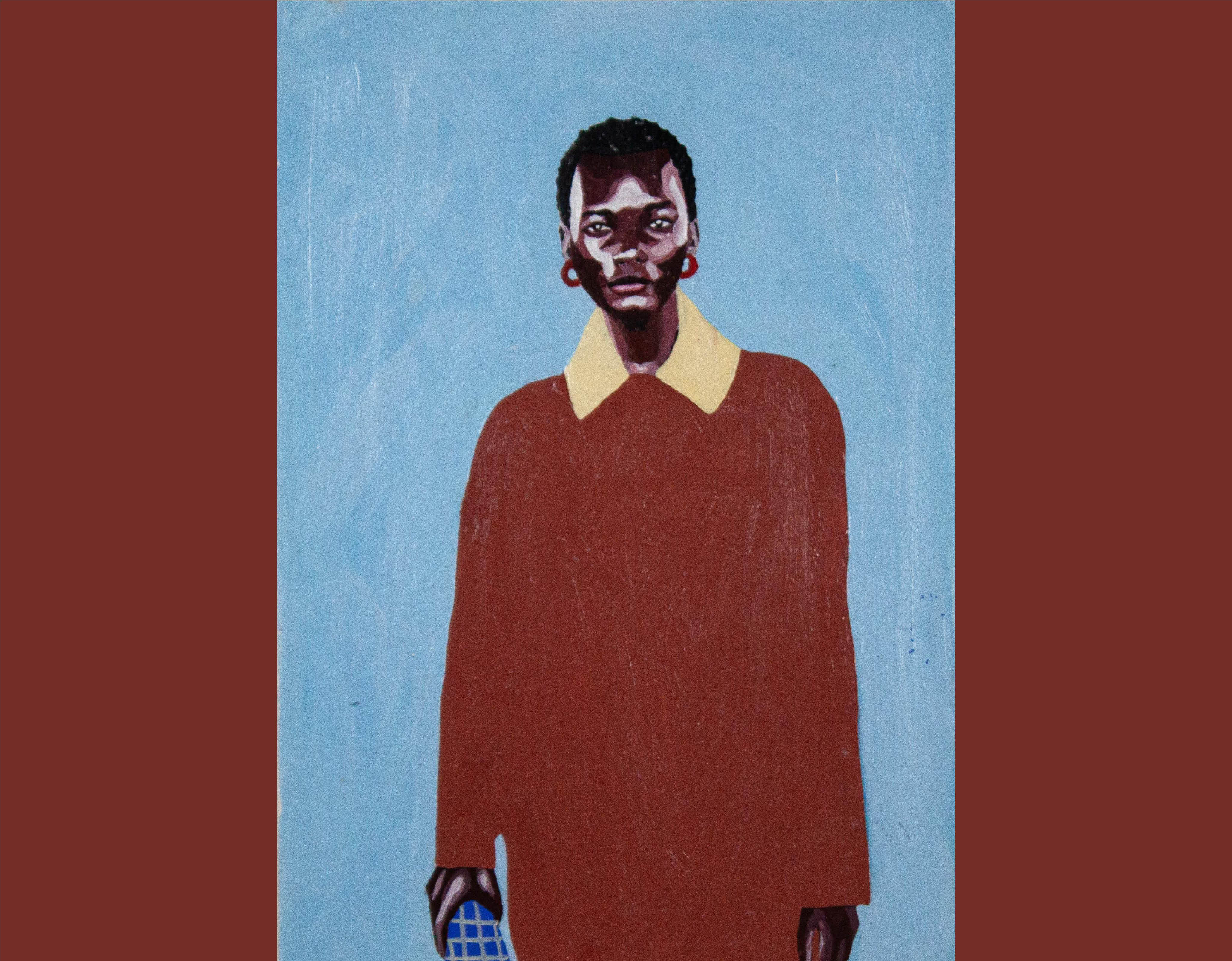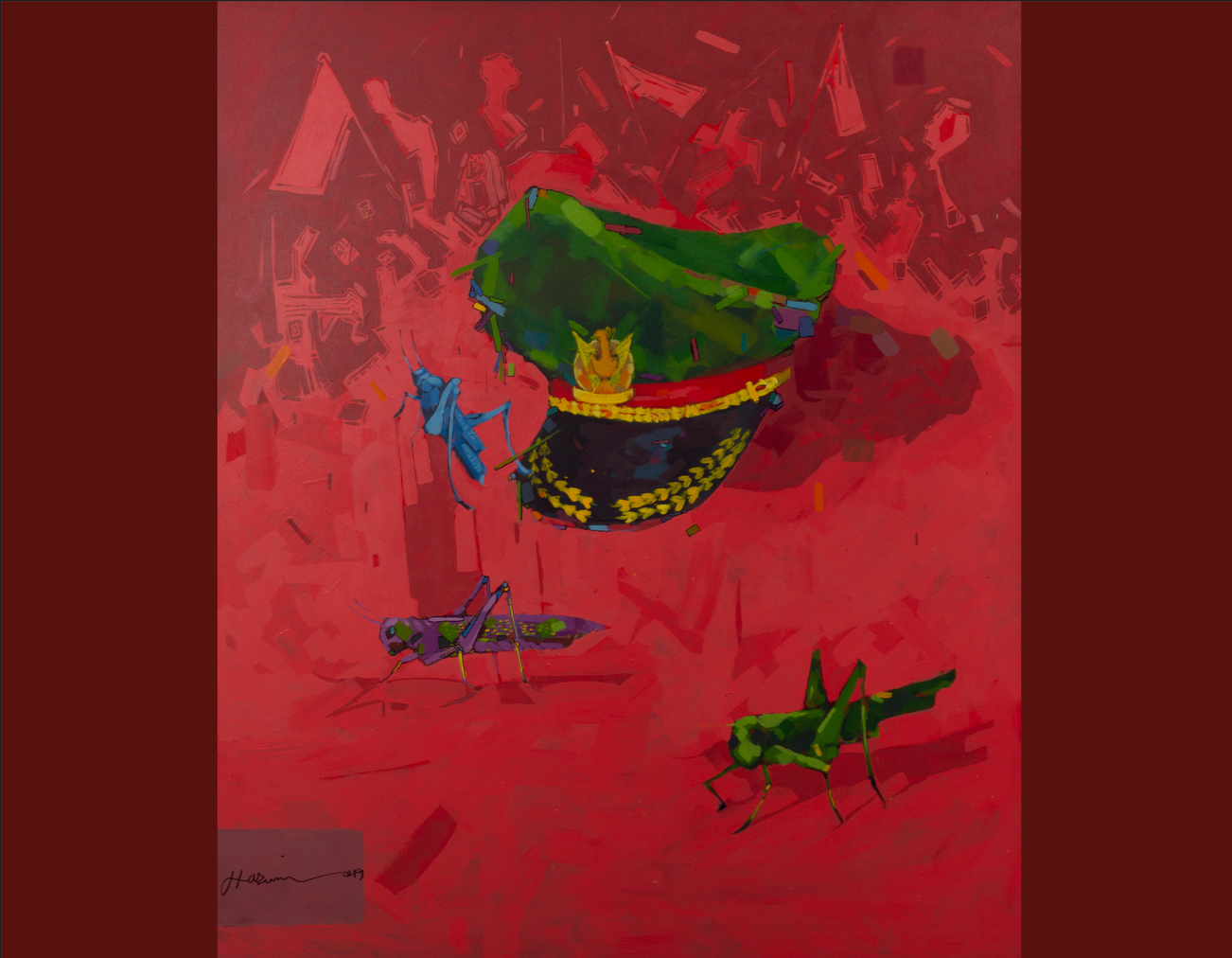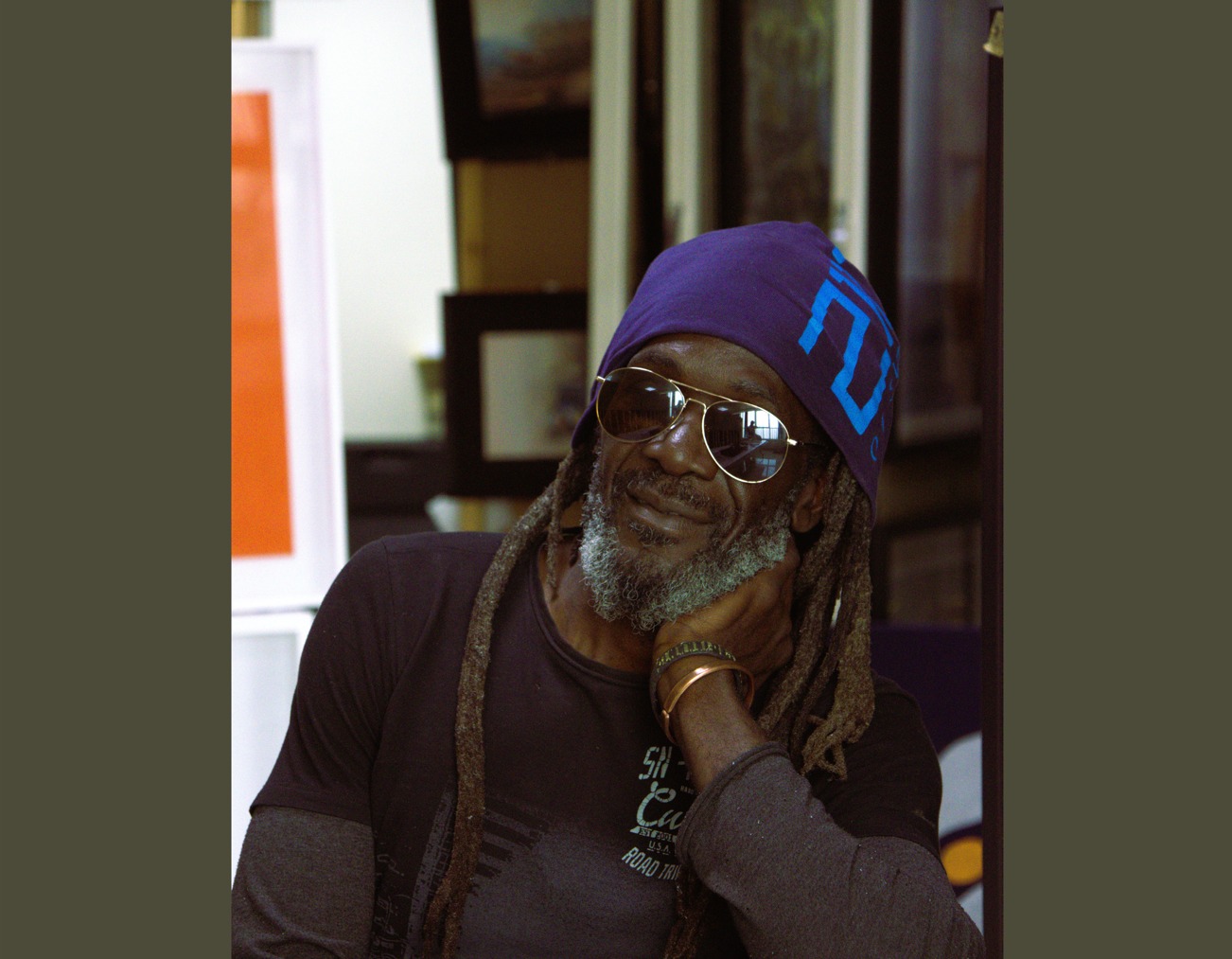An interview with Joe Bukenya

An interview with Joe Bukenya
Joe Bukenya (b.1996) is a Ugandan artist who works predominantly in acrylic and mixed media on canvas. Bukenya’s work is inspired by the way people live, behave, communicate and how they connect with their immediate surroundings.
Dominic Muwangudzi speaks with the artist for ARAK.
Why do you make art?
I make art because it has been a part of me since childhood. I remember as a child, drawing marks in the earth every time it rained and when I started school, I would reserve a book for my drawings. I was always drawing, because I wanted to express myself without using words. From an early age, art gave me the freedom to express and register my feelings and ideas without limitations. Until today, I feel the same way. I love the freedom that comes with expressing myself the way I like, every time I pick up my paint brush. It is for this reason, that I make art.
Is Africa or the African diaspora a part of your vision?
Africa is at the centre of my practice and it is my vision when I create art. I believe even other African communities, beyond Africa, are connected to the continent. Therefore, if my vision is to connect with Africa, then I will be automatically connecting with black people in the Americas and Europe.
.jpeg)
Is there anything original in art making? How do you reconcile influence and innovation?
Yes, there’s something original in art making. This is because human beings, including artists, each see or experience things in different ways. When an artist makes art, they’re expressing themselves individually—how they personally view life and whatever they’re going through. This becomes original to them.
On the subject of influence and innovation in my art making, I am always looking at my immediate surroundings or how other people in my surroundings are influenced by what is happening in their community. But I don’t only stop at this, I am curious to create a way of how what I experience in my community can be communicated to my audience in an exciting and unique way. Therefore, I am prompted to innovate with material and technique to achieve this objective. For example, I mostly work with discarded material in my art like fabrics, aluminium foil, paper and now coffee husks. These materials have a deeper message in my ar,t which is beyond their obvious identity as waste.
Are you self-taught, home-schooled, or shaped by institutional values?
I am both self-taught and shaped by institutional values. I never went to art school but when I was starting out in my career, I was involved with Colin Sekajugo who took me on as his studio assistant. Later, I got another mentorship under Afriart gallery’s art mentorship programme called Surfaces. I have also just finished a residency at Kwame Nkrumah University, Ghana, at the Department of Painting and Sculpture. All these institutions have shaped me in a sense that they have given me direction in my career as a professional artist.
Does art need society to exist? Is art the inspirational core, a reflection of what society is, or can be?
Yes it does. Art is a reflection of society because artists get inspired by the lived experiences of those who surround them to create art.
Does ‘Contemporary African Art’ mean anything to you?
In my opinion, Contemporary African Art is a platform where those who have no voice can express what they feel and see. For example, I am an artist who’s based in the local community and my working in the community is intended to give a voice to the different experiences of individuals I engage with when I am there. I effectively do this through Contemporary African Art I create.

What role do you think art institutions play in shaping the discourse around ‘Contemporary African Art’?
Firstly, art institutions give artists exposure and help them reach new audiences. They also equip artists with the knowledge and skill on how to professionally approach their work. This can be in terms of how they work with particular materials or techniques in their art. In general, they play an important role in the development of the artist’s career which is a good thing for the contemporary art scene.
Do you see a relationship between art and activism within the context of ‘Contemporary African Art’?
Yes, there’s a relationship between art and activism because our audiences expect us to address those issues that are critical to their well-being. These issues can be of an activist nature like politics or social wellbeing or, for example, an issue like waste management. When the artist tackles these issues in their work, they become an activist.
If I said African art is a global game-changer, what might this mean to you?
In my view, it means that African art is of so much significance now to the international art world. The reason for this is probably because now the outside world knows that African people matter and they also have something to say to the rest of the world. Whatever we have to say can be traced in our art and this gives it a lot of attention on the global art stage. This obviously was not the case many centuries ago.
How do we calibrate provincialism, nationalism, regionalism, continentalism and globalism? Is geopolitics vital in the making of art?
These territorial boundaries are important because they give us an identity on a global stage. When it comes to geopolitics in the making of art, it is equally important in a sense that the art made by an artist from Uganda can easily be recognised because it tells a story of his immediate surroundings. I create my art with coffee husks as a medium and this material is unique to my art because it has a story of my country as one of the leading producers of coffee in the world, but few Ugandans consume this beverage.

Is the medium the message? Is supplementary content important?
Yes, the medium is the message because if I choose a certain material to work with, I do it because it is not innocent. This material has a history, and my objective is to convey this history through my art to the public.
What theme(s) or message(s) do you wish to delineate through your work? Why do you think you need an audience and why is it important?
My themes are often about highlighting how instant connectivity and advancement in technology is challenging human interaction, sense of identity and belonging. While navigating these themes, I am extending an invitation to the audiences to actively engage with and contemplate the immediate world that surrounds them.
I believe I need an audience to get feedback on what I am creating as an artist. I need to know if my audience relates to what I put out there through my work. The only way I can achieve this is if there’s someone who sees my work and can react to it or give me feedback which can help me in shaping my future projects.
What role do you think criticism/art writing plays in the contemporary art market? What does it mean for your own practice?
Art writing contributes to feedback on the artist’s work and this motivates them to create much better art. Equally, art writing provides vital information on the artist such that if an art buyer or collector is interested in buying their work, they will use any piece of writing on the artist as a source of reference to know more about their subject matter, theme and technique.
Cover artwork: Joe Bukenya, Untitled, 2024. Acrylic on paper, 21 x 29,7 cm
.svg)


.svg)
.svg)


